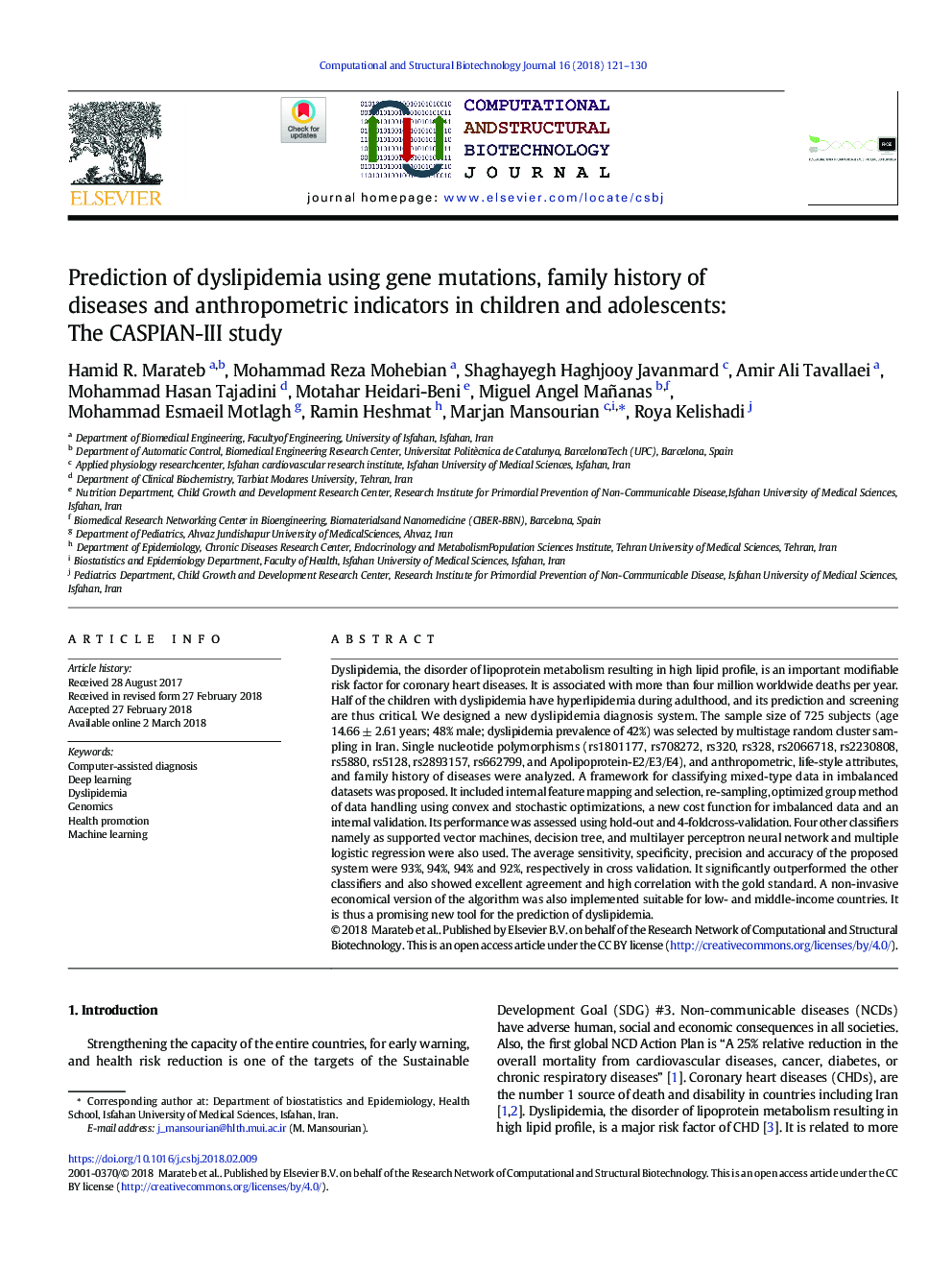| کد مقاله | کد نشریه | سال انتشار | مقاله انگلیسی | نسخه تمام متن |
|---|---|---|---|---|
| 8408173 | 1545069 | 2018 | 10 صفحه PDF | دانلود رایگان |
عنوان انگلیسی مقاله ISI
Prediction of dyslipidemia using gene mutations, family history of diseases and anthropometric indicators in children and adolescents: The CASPIAN-III study
دانلود مقاله + سفارش ترجمه
دانلود مقاله ISI انگلیسی
رایگان برای ایرانیان
کلمات کلیدی
موضوعات مرتبط
علوم زیستی و بیوفناوری
بیوشیمی، ژنتیک و زیست شناسی مولکولی
بیوتکنولوژی یا زیستفناوری
پیش نمایش صفحه اول مقاله

چکیده انگلیسی
Dyslipidemia, the disorder of lipoprotein metabolism resulting in high lipid profile, is an important modifiable risk factor for coronary heart diseases. It is associated with more than four million worldwide deaths per year. Half of the children with dyslipidemia have hyperlipidemia during adulthood, and its prediction and screening are thus critical. We designed a new dyslipidemia diagnosis system. The sample size of 725 subjects (age 14.66â¯Â±â¯2.61 years; 48% male; dyslipidemia prevalence of 42%) was selected by multistage random cluster sampling in Iran. Single nucleotide polymorphisms (rs1801177, rs708272, rs320, rs328, rs2066718, rs2230808, rs5880, rs5128, rs2893157, rs662799, and Apolipoprotein-E2/E3/E4), and anthropometric, life-style attributes, and family history of diseases were analyzed. A framework for classifying mixed-type data in imbalanced datasets was proposed. It included internal feature mapping and selection, re-sampling, optimized group method of data handling using convex and stochastic optimizations, a new cost function for imbalanced data and an internal validation. Its performance was assessed using hold-out and 4-foldcross-validation. Four other classifiers namely as supported vector machines, decision tree, and multilayer perceptron neural network and multiple logistic regression were also used. The average sensitivity, specificity, precision and accuracy of the proposed system were 93%, 94%, 94% and 92%, respectively in cross validation. It significantly outperformed the other classifiers and also showed excellent agreement and high correlation with the gold standard. A non-invasive economical version of the algorithm was also implemented suitable for low- and middle-income countries. It is thus a promising new tool for the prediction of dyslipidemia.
ناشر
Database: Elsevier - ScienceDirect (ساینس دایرکت)
Journal: Computational and Structural Biotechnology Journal - Volume 16, 2018, Pages 121-130
Journal: Computational and Structural Biotechnology Journal - Volume 16, 2018, Pages 121-130
نویسندگان
Hamid R. Marateb, Mohammad Reza Mohebian, Shaghayegh Haghjooy Javanmard, Amir Ali Tavallaei, Mohammad Hasan Tajadini, Motahar Heidari-Beni, Miguel Angel Mañanas, Mohammad Esmaeil Motlagh, Ramin Heshmat, Marjan Mansourian, Roya Kelishadi,